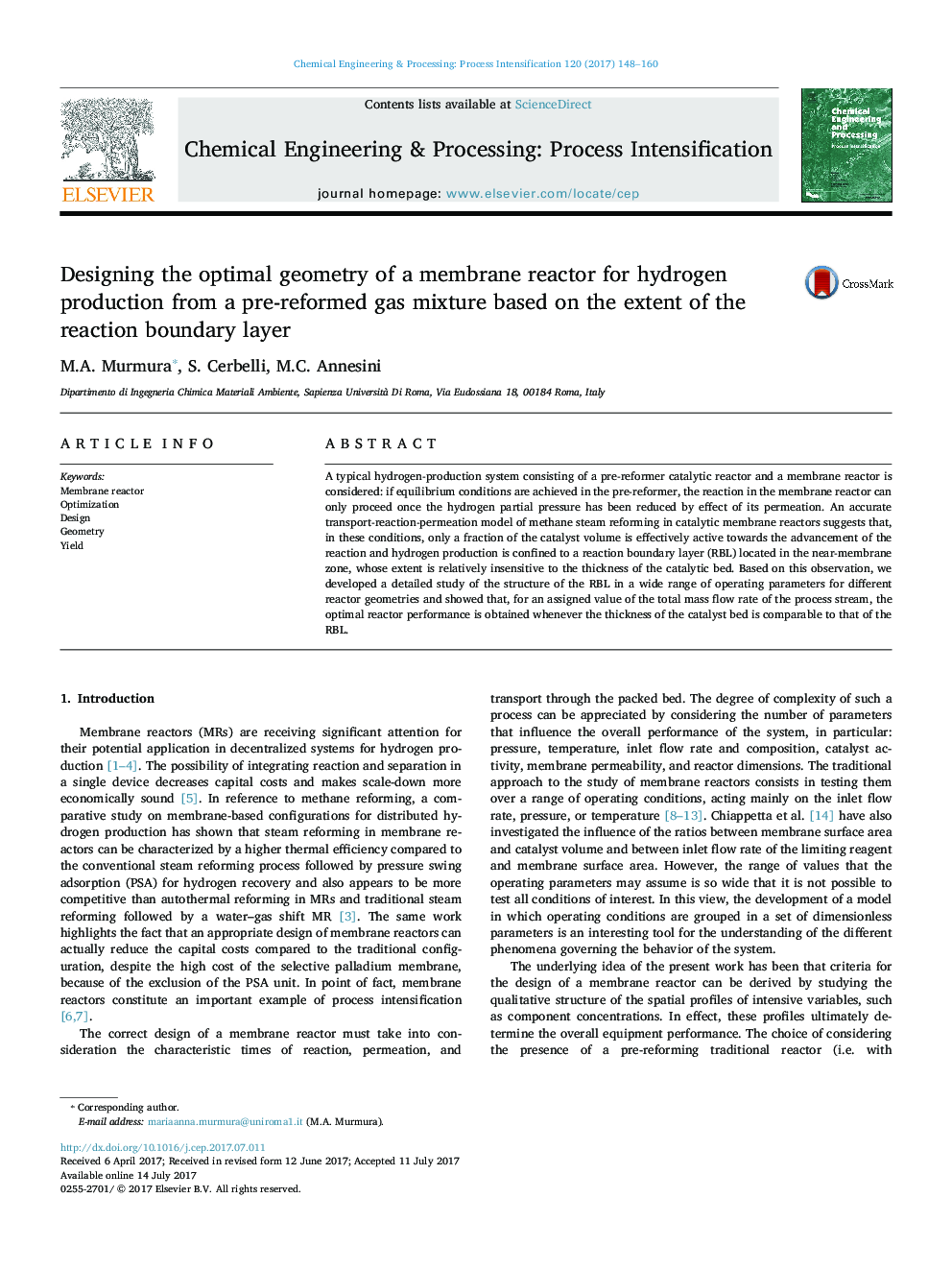| Article ID | Journal | Published Year | Pages | File Type |
|---|---|---|---|---|
| 4998138 | Chemical Engineering and Processing: Process Intensification | 2017 | 13 Pages |
Abstract
A typical hydrogen-production system consisting of a pre-reformer catalytic reactor and a membrane reactor is considered: if equilibrium conditions are achieved in the pre-reformer, the reaction in the membrane reactor can only proceed once the hydrogen partial pressure has been reduced by effect of its permeation. An accurate transport-reaction-permeation model of methane steam reforming in catalytic membrane reactors suggests that, in these conditions, only a fraction of the catalyst volume is effectively active towards the advancement of the reaction and hydrogen production is confined to a reaction boundary layer (RBL) located in the near-membrane zone, whose extent is relatively insensitive to the thickness of the catalytic bed. Based on this observation, we developed a detailed study of the structure of the RBL in a wide range of operating parameters for different reactor geometries and showed that, for an assigned value of the total mass flow rate of the process stream, the optimal reactor performance is obtained whenever the thickness of the catalyst bed is comparable to that of the RBL.
Related Topics
Physical Sciences and Engineering
Chemical Engineering
Process Chemistry and Technology
Authors
M.A. Murmura, S. Cerbelli, M.C. Annesini,
